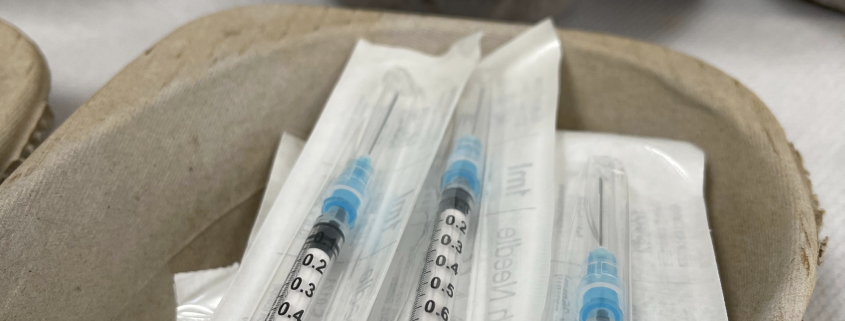Syringe exchange programs can improve L.A. drug population

Syringe exchange among the unhoused population has been a growing public health concern nationally since the 1980s. However, this issue becomes even more pressing in Los Angeles, where the nation’s largest unhoused population resides.
Within these populations, the availability of clean needles is essential for preventing the spread of infectious diseases such as HIV/AIDS and hepatitis C. Fortunately, syringe exchange programs — also known as syringe service programs — give individuals access to sterile needles, help facilitate safe disposal of used syringes and provide other mental and physical health resources. Despite these benefits, many argue that SEPs promote drug use and addiction rather than reducing the spread of infectious diseases and death.
The reality is the complete opposite.
Through providing clean needles, these programs greatly reduce transmission of blood-borne diseases. According to the Centers for Disease Control and Prevention, SEPs are associated with an approximately 50% reduction in HIV and HCV incidence.
These programs don’t just hand out syringes, they provide proper education of overdose and infections and opportunities for individuals experiencing homelessness to connect with resources for drug treatment, social services and medical care. The CDC reports that new users of SEPs are five times more likely to enter drug treatment, and that daily users are three times more likely to reduce drug use compared to individuals who are not in the programs.
Another matter of contention regarding SEPs is that they can have a large impact on the safety of communities and neighborhoods in which they operate. However, the National Institute of Drug Abuse found in a 2012 NIDA-funded study, researchers found 86% fewer used syringes littered on the streets of communities with SEPs in place. With cleaner streets, children and adults who reside within these communities would be safer due to fewer risks of needlestick injuries and illness.
The need for SEPs throughout L.A. County is more critical now than ever, as homelessness is on the rise and has been found to be associated with an increase in drug injecting behavior. The crisis is further exacerbated by many emerging issues, including antibiotic resistant bacteria, infectious disease and drug addiction. Addressing these issues and pushing SEPs forward will improve population health in communities and, on a larger scale, decrease unnecessary funding of hospitalization and HCV healthcare services that lead to annual expenses in the billions.
The root of the controversy behind SEPs all boils down to the idea of prevention versus treatment. When we take a look at various health behaviors, prevention is not as feasible as people may think. To quit a drug addiction with a snap of a finger is almost impossible, and the reason is quite simple: Health behavior is not simply black and white. In this case, the health behavior of drug injection can lead to disease, overdose and more. Therefore, to somehow eradicate drug injection, one would have to target each of all of these effects.
In most cases, it may seem as if those struggling with drug use are the cause of their own problems, a clear example of the “Us/Them” phenomenon at play. It is easy for us to overlook the mere fact that those classified as “Them,” drug injection users, are human beings like the rest of “Us.” Many times, drug users are looking for help, but they do not have the ability. With the stigma in place, other factors such as low awareness of helpful resources, lack of treatment facilities and financial barriers only make seeking help more of a burden.
Rather than despising what the streets of L.A. have come to be, neglecting those who are unhoused at no fault of their own and ignoring effective solutions that tackle the root of the SEP, it is time we recognize the importance of the systematic approach SEPs have taken and its success. Whether we actively work to fulfill the goals of the program or be further conscientious of this drug issue that may surround our daily lives, it is time we prioritize the health and dignity of all individuals and support these programs as a vital part of this effort.

